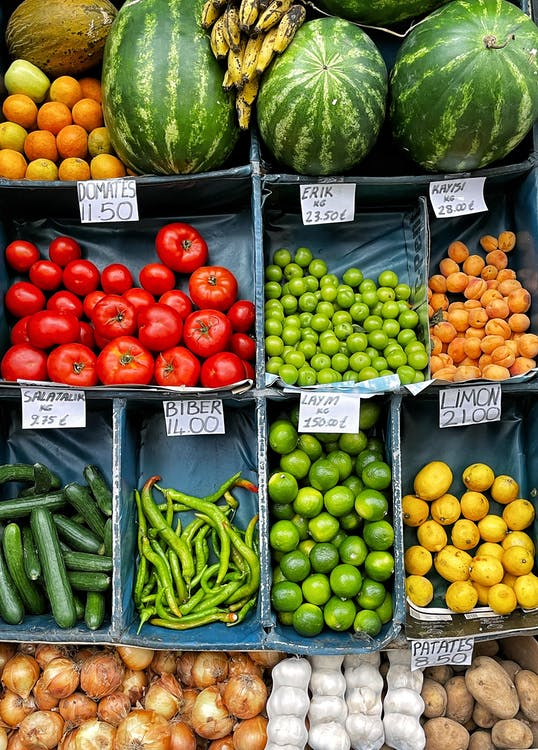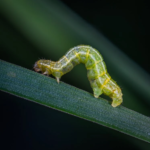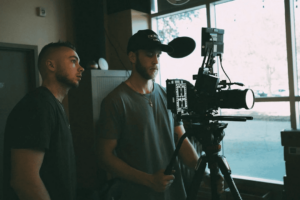Macro photography is a type of close-up photography initially developed for scientific research. The exact definition of macro photography is that the subject is shot at 1:1 magnification. In simple words, the subject is life-sized in the image.

However, most people refer to “macro photography” as any photograph representing a close-up and highly detailed image of a small subject.
Examples of macro photography are: A full-frame insect in a five-by-seven-inch photo and a four-inch product shot of a cornflake go well above life-size.
Origination of Macro Photography
Macro photography began in the early 1900s when F. Percy Smith began photographing insects. He used almost the same equipment we use today, i.e., bellows and extension tubes. These devices placed the lens further away from the film negative, creating a closer focal point and allowing for more close-up images.

In the 1950s, the invention of the Single Lens Reflex (SLR) film camera, which allows the photographer to view through the actual camera lens using the viewfinder, made macro photography more widely available and easier for beginners to pick up. As a result, SLR cameras led to a boom in macro photography, which led to the invention of the first dedicated macro lens.
Nowadays, there are a wide variety of digital cameras, lenses, and other tools to aid in the production of macro photography. The essential piece of equipment you’ll need is an excellent macro lens.
What are the Types of Macro Lenses?
A macro lens is a type of camera lens specifically designed to focus close up on the subject with a 1:1 (life-size) reproduction. Macro lenses come in different focal lengths, from 35mm up to 200mm.

Short macro lenses (35mm-60mm)
These macro lenses are light and inexpensive, but they also require the photographer to stay very close to the subject, which can cast shadows and (worse) scare your subject away.
Intermediate macro lenses (90mm-105mm)
These mid-range macro lenses have a longer working distance but are still light enough to use without a tripod.
Long macro lenses (150mm-200mm)
Macro lenses with a longer focal length provide the best quality photos at the longest distance, ideal for shy macro subjects like insects. But they’re also the heaviest and most expensive macro lenses.
Most experts recommend a macro lens with a focal length between 100mm and 150mm for beginners or amateur photographers. Some of the popular macro lenses to consider are:
- Sony: Sony FE 90mm f/2.8 Macro G OSS or Sony E 30mm f/3.5 Macro
- Canon: Canon EF 100mm f/2.8L Macro or Canon MP-E 65mm f/2.8 1-5x Macro
- Nikon: Nikon AF-S VR Micro Nikkor 105mm f/2.8G or Nikon AF-S DX Micro Nikkor 40mm f/2.8G
- Tamron: Tamron SP 90mm f/2.8 Di Macro 1:1 VC USD
- Sigma: Sigma APO Macro 180mm f/2.8 EX DG OS HSM Lens
What is the Best Camera for Macro Photography?
While a macro lens is the most important piece of macro photography equipment, starting with a high-quality (and lens-compatible) camera is crucial. Mirrorless cameras benefit from displaying the final photograph for review through the viewfinder. In contrast, both standard DSLR cameras and mirrorless cameras are great options for macro photography. This means you can set up your shot and make adjustments without moving the camera. If you opt for a mirrorless camera, be sure that it has an electronic viewfinder for close-ups since focusing on a macro shot from an LCD screen is very difficult.

Here are some camera brands and models to consider for macro photography:
- Canon: Canon cameras show you the actual aperture rather than the “functionally correct” aperture. The Canon EF series is a reliable option for macro photography.
- Nikon: Nikon cameras possess the highest resolution, with 36 megapixels. The Nikon AF series is an excellent option for macro photography.
- Sony: Even before Canon and Nikon, Sony has been specializing in mirrorless cameras. The A-series full-frame is a top mirrorless option.
- Other brands: Micro four-thirds cameras, such as the Olympus M macro shooting line, are a good starting point for macro photography. Other brands to consider are Pentax.
What Are Extension Tubes and How Are They Useful in Macro Photography?
Extension tubes can help you take close-up photos if you can’t afford to buy a macro lens.

- Extension tubes are hollow tubes that you attach to your existing lens to extend its focal length.
- These tubes are typically sold in sets, which can be mixed and matched depending on the situation.
- A starter kit of extension tubes generally costs about $150–$200.
- Try to spend a bit more money and purchase an extension tube that offers electrical connections between your lens and the camera, providing greater control with settings like aperture and focus.
Extension tubes do have some drawbacks. For instance, because they place more distance between the lens and camera sensor, extension tubes reduce the amount of light that hits the sensor. Consequently, you’ll have to adjust the aperture and shutter speed to compensate. Keep in mind, too, that extension tubes are only as good as the lens they are attached to. So, invest in a good lens from the start, and your photos will turn out better.
What Are Macro Filters?
Macro Filters are another option for obtaining macro effects with your existing lens. Close-up filters mimic macro photography by enabling close focusing distances. A close-up filter screws onto the front of your lens and acts as a magnifying glass.
Close-up filters are the most inexpensive ways to take macro pictures, and they’re effortless to carry. However, they’re often manufactured with lower-grade glass and can reduce image quality.
How Aperture and Depth of Field Work in Macro Photography?
Macro lenses offer a very shallow depth of field, particularly at the closest focusing distances. This can make it very difficult to get all of your macro photography subjects in sharp focus. Lowering your aperture settings to f/16 increases the available depth of field, easily focusing your subject.

It’s also worth noting that the magnification effects of macro lenses, combined with exposure and depth of field, can change the effective aperture of your camera. For instance, while you may be technically shooting macro at an f-stop of f/11, the above factors mean that your camera’s “functional aperture” is closer to f/22. (Some camera brands, like Sony or Nikon, compensate for displaying this working aperture, while others, like Canon, do not.)
Subjects to Choose for Macro Photography
The macro photography was invented to capture insects, plants, and tiny objects that the naked eye could not notice in detail. To date, macro photography is an excellent way to get close-up shots of flies, bees, butterflies, worms, flowers, leaves, and more.
Nature
Macro photography is a great way to discover creatures’ “secret lives”, the flora and fauna. You can go to a park nearby, or even your backyard, to find subjects to capture. If you are unsure where to go, try a place with water—many plants grow near water, and bugs like to be near water. As with any nature photography, be sure to cover yourself thoroughly to protect yourself from bug bites and other environmental factors. You can wear long pants, long sleeves, a neck covering, and if needed, gloves.

Portraits
There are many other subjects to photograph on a macro scale outside of bugs and plants. Macro photography is a great way to create a unique portrait of a person. You can photograph their eyes, ears, or nose closely to pick up human details that other photography methods would miss. Just make sure your subject is comfortable having this part of their body under the microscope of your lens.

Food
From fast-food chains to fine dining restaurants, food photographers extensively use macro photography to accentuate the colors, textures, and craftsmanship of foods and beverages.

Products
Photographers use macro photography to create detailed shots of different products, including consumer electronics, jewelry, and other luxury goods. If you plan to use macro photography to support your photography business, capture the details of different products around your home—a flower vase or a set of pencils, for example.

Macro Photography Lighting
Start with natural light when photographing macro shots. Make use of the sun and all it offers instead of using any flashes or studio strobes, especially not at first. Here are the two best times in a day to do outdoor macro photography:
Cloudy midday
Cloudy light is best for macro photography. It’s soft and flattering, making colors look super vibrant.

Unfortunately, the sky will be dark, and you’ll struggle to get a nice, bright image as cloudy light early and late in a day doesn’t work so well. So, ensure to head out toward the middle of the day if the sky is cloudy.
Sunny mornings and evenings
The golden hours, i.e., the first hour or two after sunrise and the last hour or two before sunset – are loved by most photographers. They offer soft golden light that looks magnificent. The colors look pretty, and you can create exciting lighting effects.

The only caution is that there should be a clear sky. Too much cloud cover will lead to the loss of beautiful light. Then you’ll end up with dim, cloudy light, which doesn’t work so well for macro shooting.
Do not do macro photography when the light is harsh
If you take shots when the light is harsh, you’ll end up with bad exposures, unpleasant colors, and unflattering shadows, no matter how skilled you’re in photography.
When is the light harsh?
While macro photography finds beautiful expression during golden hours without too much cloud cover, midday is the worst period. A few hours before and after midday are also worse, at least at most latitudes. So, shoot when the light is good and avoid shooting when the light is harsh.
Tips to Take Great Macro Photographs
Having the right essential equipment is a must, but just having great tools won’t necessarily produce good shots; the more you try and fine-tune your technique, the better your photos will be.

Here are some important tips to take great macro shots.
Shoot a lot
As with any photography, the more shots you take, the more room you’ll have to experiment and the more possibilities you’ll have to get the perfect shot. This is especially true of macro photography, where you might not get another chance to be so close and personal with your subject.
Deal with the depth of field dilemma
The closer you get to your subject, the shallower the depth of field becomes, and this effect can make it challenging to get your entire subject in focus. If you are using a point-and-shoot camera, there is nothing you can do about this, but if you are using a DSLR camera, you can increase the depth of field by lowering your aperture (choosing a larger f-number).
Unfortunately, reducing your aperture restricts light, so you may also have to reduce your shutter speed to compensate. If your shutter speed is prolonged, it’s hard to get a sharp image without blurs from the camera shake. You can quickly find yourself in an annoying photographic balancing act.
You can overcome this by increasing your camera’s ISO sensitivity, but this isn’t reliable; increasing ISO inevitably increases visual “noise,” so use this adjustment with care.
The only proper solution is to take plenty of macro shots, get thoroughly familiar with the capabilities of your camera, and find out what combination of aperture, depth of field, and ISO work best for you.
Use manual focus if possible
Manual focus isn’t going to be an option if you’re using a point-and-shoot camera. But if you are using a DSLR, you can get the best macro shots by manually focusing rather than relying on your camera’s autofocus mode.
Stabilize your camera
To stabilize your camera, use a tripod, a remote shutter release, and set up your shots correctly. The blurring effects of even the slightest movements are exaggerated at high magnification and very close range. So, keeping your camera steady is key to getting the best shots. If you are not using a remote shutter release, try to shoot on the out-breath for the slightest movement.
Move the subject, not the camera
Get your camera fixed, and don’t move it when you’re shooting a staged subject.
Once you’ve got your shot framed, light well-balanced, and well in focus, keep your camera as it is. Change the position of your subject, make any adjustments to your vignette.
Try positioning your subject on a surface that can be moved easily, elevated, etc., as this can be a major timesaver.
Try the effect of different backgrounds
Of course, this isn’t going to be an option if you’re shooting outside, but if you’re shooting vignettes you’ve set up indoors, try different backgrounds – you will be surprised at the variety of effects you get. Something like a pack of colored construction paper can provide a lot of inspiration.
Fine-tune your composition
Compose your best shot in the camera but don’t depend on post-processing to create your optimum image.
If you’re focusing on a pattern within your subject, move the subject around until the pattern fills the entire frame, with no gaps.
If you’re shooting a tiny object, position it so that there’s even space around it on all sides. Sometimes, experimenting with your point of focus is the most minute change that will give your subject a completely different look and create an entirely different effect.
Keep it tidy
Everything shows up when you’re shooting macro. You find dust, pet hair, and fingerprints that you can’t even notice with the naked eye but become annoyingly ultra-visible in close-up, highly magnified photos.
Experiment with different angles
Keep in mind that small changes have significant effects on macro photography. So, shifting the angle you’re shooting even slightly can give you an entirely different picture.
Use flash
Because macro photography includes very small apertures that restrict light, flash can be priceless, especially when shooting outdoors with no supplemental lighting.
Just about any flash will work, but use a diffuser to give the light a more natural look. You can also try commercial flash diffusers, but use any translucent white material that you can put between your subject and the flash.
Final Words
Macro photography is an exciting genre that can turn into a lifetime obsession. There’s no end to the creative possibilities as there are great subjects everywhere. Anyone who holds a digital camera already has the equipment required to get started. Furthermore, as any macro photographer will tell you, there’s a lot of fun in shooting small. Whether you’re just starting or have dreams of going professional, photography requires plenty of practice and a strong dose of creativity.
Macro Photography Gallery
Macro Photography Videos
An Introduction To Macro Photography
Mastering Macro Photography: The Complete Shooting and Editing Tutorial
8 Beginner Mistakes in Macro Photography – avoid them to take great photos!
Macro photography ideas to shoot at home

























